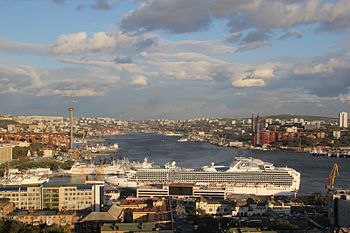 |
| Aerial View of Tripoli Libya |
 Tripoli was founded in the 7th century BC by the Phoenicians, who named it Oea.[1] Due to the city's long history, there are many sites of archaeological significance in Tripoli.
Tripoli was founded in the 7th century BC by the Phoenicians, who named it Oea.[1] Due to the city's long history, there are many sites of archaeological significance in Tripoli."Online City Postcard & Magazine"

Cities have always been the natural economic units of theworld. But in the past several decades, what we once thought of as separatecities ?with central cores surrounded by rural villages, or later bysuburbs ?have grown into "megaregions" composed of two or morecities, like the Boston-New York-Washington corridor. Richard Florida of www.bnet.com

The geographical location of this city makes this city a central place to be a major participant in the country's overall economic and financial portfolio. There are too many attractions in this historical city but the Bouskoura forest is the only natural attraction in the city. Not only this but there is so many other things to do and places to visit while having a family trip or a business tour to this attraction of Morocco. You can find a lot of foreign tourists in Casablanca and if you are traveling from London, you can easily book your cheap flights to Casablanca from London.- Allen Ross

A city usually consists of residential, industrial and business areas together with administrative functions which may relate to a wider geographical area. A large share of a city's area is generally taken up by houses, roads, and streets. Lakes and rivers may be the only undeveloped areas within the city. - www.knowledgerush.com

In a big city, people have the best chance to study and work. There are many good universities to choose from in a big city. Moreover, when you graduate, you also find it easier to find opportunities to get a good job with a good salary. That is quite difficult in small cities or countrysides, where there are not as many many big companies and groups. Hence, many graduate students choose big cities to live and work. In short, it is where you can take advantage of a city's benefits for yourself.
 |
| Aerial View of Tripoli Libya |
 Tripoli was founded in the 7th century BC by the Phoenicians, who named it Oea.[1] Due to the city's long history, there are many sites of archaeological significance in Tripoli.
Tripoli was founded in the 7th century BC by the Phoenicians, who named it Oea.[1] Due to the city's long history, there are many sites of archaeological significance in Tripoli.









